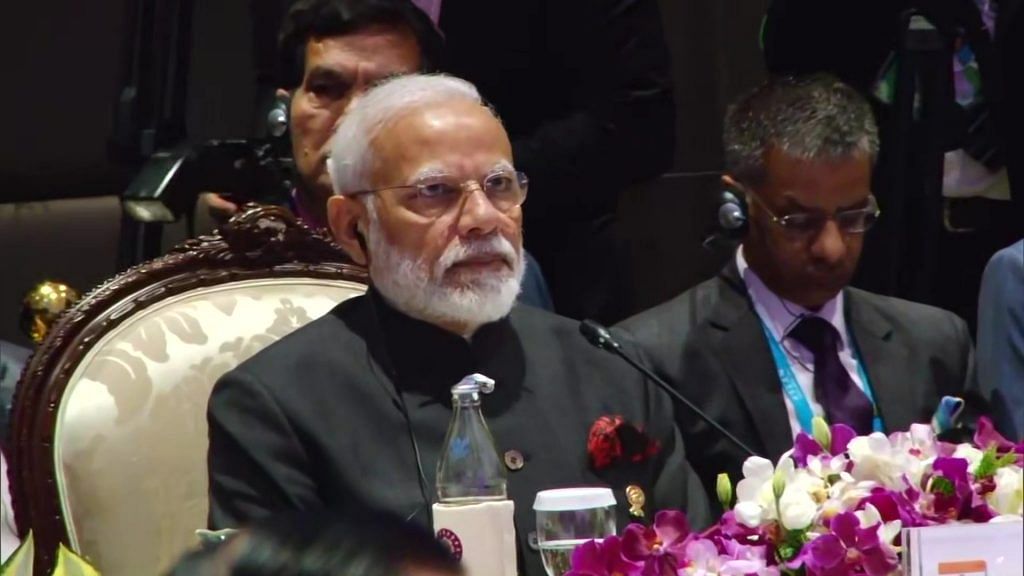New Delhi: Earlier this month, when members of the Regional Comprehensive Economic Partnership Agreement (RCEP) — the world’s largest trade agreement —affirmed their commitment to each other, India stood on the sidelines, as Prime Minister Narendra Modi chose to opt out of it.
In episode 625 of ‘Cut The Clutter’, ThePrint’s Editor-in-Chief Shekhar Gupta talks about what the RCEP is and why India chose to stay out of it — was it simply being cautious or is the country averse to competition?
All trade agreements are essentially about reducing tariffs — taxes for what one is importing. When the world began globalising, countries started making bilateral arrangements among themselves, called free trade agreements. Then large groups of countries started doing this. For instance, the Association of Southeast Asian Nations (ASEAN) and the North American Free Trade Association (NAFTA).
In the region that is relevant to India, the Trans Pacific Partnership (TPP) came up in 2005. It was later renamed as the Comprehensive and Progressive Agreement for Trans-Pacific Partnership (CP-TPP) as more members joined. Then came the idea of RCEP, at the 2011 ASEAN Summit, Gupta said.
Many countries are members of both RCEP and the CP-TPP. But after the 2008 economic crisis, several nations became wary of globalisation. On his first full working day as the US President, Donald Trump pulled America out of the CP-TPP.
“Essentially, like all free trade agreements, the RCEP entails a reduction of duties or tariffs. So CP-TPP says that 90 per cent of the products or services should go to zero duty in the course of time. Whereas, RCEP says that 80 per cent of the goods should keep on reducing duties until they go to almost zero, or a very low level in 20 years,” Gupta explained.
CP-TPP accounts for 40 per cent of the global GDP, but only 10 per cent of the world’s population. While RCEP accounts for 40 per cent of the global GDP, but 50 per cent of the world’s population.
“There’s much debate about how much benefit RECP would have brought India. There’s an article in The Economist which says that China does not benefit from it. The other thing that this article tells us is that 83 per cent of all the trade among countries in RCEP agreement is already covered by foreign trade agreements between those nations,” Gupta said.
Also read: The implications of Netanyahu, Pompeo and Mohammad bin Salman’s ‘secret meeting’
‘Chronic fear of exports’
India has so far not said that it was walking out of the deal because of China. It has only stated that the deal was unfair. The reduction on tariffs, India thinks, will further de-industrialise some manufacturing sectors in the country.
“If you look at India’s trade balance situation, India has a trade deficit now — a big reason being oil imports. India has its biggest negative balance of trade with China. At one point, it had gone up to $70 billion a year. Now it has come down substantially. But it’s come down not only because Indians are importing less from China. It has also come down because India’s economy is suffering and the industry is not importing much from China by way of machinery goods, etc,” Gupta added.
From April to September, the India-China trade deficit stood at Rs 1,25,000 crore. At the same time, India had its biggest trade surplus with America, at Rs 77,000 crore. “So we are giving a hard time to a country with which we enjoy a huge surplus. And we are running away from a country with which we also suffer from a big trade deficit but don’t seem to have an answer,” Gupta noted.
The Asian Development Bank tells you that in the world today there are 42 free trade agreements. So it’s not as if trade agreements are so bad.
“Creative destruction of capitalism is a good thing. Some people lose out, but people who are inefficient, non-competitive, do not have good ideas, do not know the market, do not respect the market get shaken out,” Gupta argued.
He also said that Indian businesses were backing “completely misplaced” ideas of the Narendra Modi government to bring back protectionism. Going away from these trade agreements, protecting their domestic industry from foreign competition, obviously at the cost of us consumers and taxpayers. “It’s a crime,” Gupta said.
There is a chronic fear of exports, which runs very deep in our Indian psyche. And this is despite the fact that after 1991, India’s exports — save its software services — have really boomed. That is India’s big success story.
Watch the latest episode of CTC here:
Also read: China’s 14-point ‘charge sheet’ against Australia, Five Eyes Alliance, & how Xi blew it
